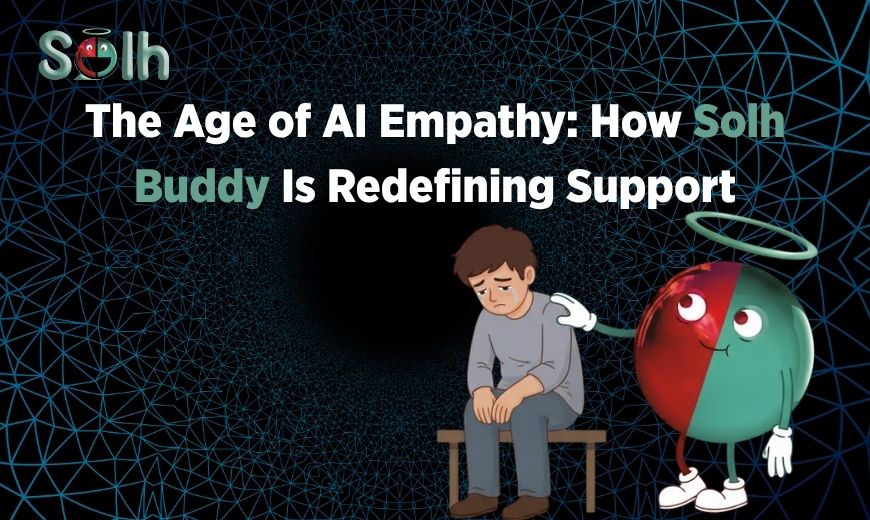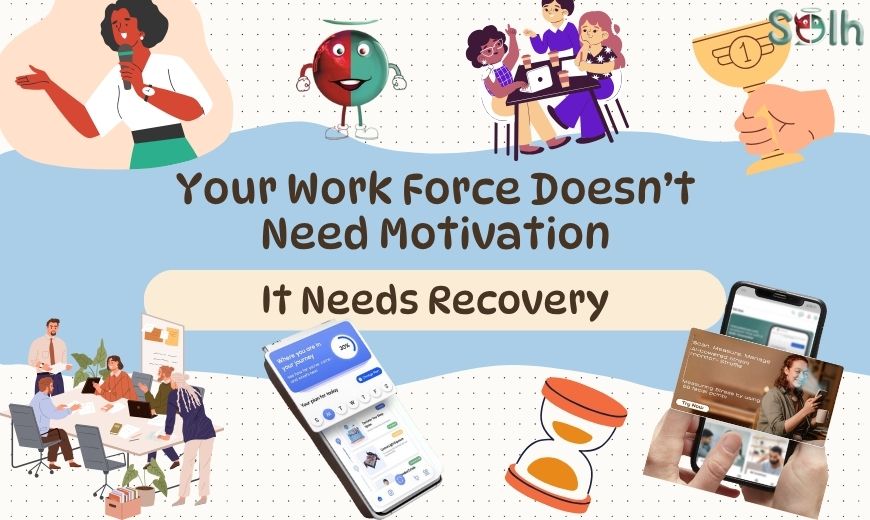Quick Summary
Workplace stress management has outgrown HR webinars and corporate pep talks.
It’s now a leadership mandate — the difference between a team that survives and a team that walks out silently.
The future of organizational mental health is data-first, emotionally literate, and leader-led — powered by the Solh Stress Management Ecosystem, organizational mental health insights, and real wellbeing metrics that don’t lie.
The Corporate Lie: “HR Will Handle It.”
Let’s stop pretending.
HR doesn’t create stress.
HR doesn’t set impossible deadlines.
HR doesn’t decide targets, pace, tone, or pressure.
Leaders do.
Yet every time the culture starts cracking, organisations throw the problem at HR like a broken toy:
“Run a session.”
“Do an awareness week.”
“Send an email.”
“Put posters in the pantry.”
That’s not wellbeing.
That’s corporate cosmetics.
If leaders build the pressure,
leaders must manage the fallout.
Simple.
And certainly not with corporate wellness platform band aids.
The New Reality: Stress Is a Leadership KPI
Work-related stress is not “attitude.”
It’s not a “bad day.”
It’s not “millennial sensitivity.”
It’s a business risk, a performance killer, and a cultural rot.
Leaders obsess over revenue dashboards, funnel metrics, quarterly decks… but completely ignore the mental health impact of their own decisions.
This is why leadership accountability for mental health is no longer optional.
It’s foundational.
If you lead people, you need:
leadership mental health KPIs
manager-led wellbeing culture
stress accountability systems
data-driven decision-making
work related stress visibility dashboards
Because if you don’t measure the stress you cause,
you don’t deserve the team that carries you.
Why HR Cannot Fix Leadership-Driven Stress
HR can remind.
HR can support.
HR can recommend.
But HR cannot fix:
unrealistic goals
pressure cycles
poor planning
toxic leaders
inconsistent communication
burnout disguised as “ownership”
emotional numbness at the top
Stress management for employees depends on how leaders behave,
not on how HR writes emails.
A Stress Management Ecosystem collapses
if the biggest source of stress is the one refusing to change.
This is exactly why Stress Management Solutions for Organizations must be leader-owned, not HR-pushed.
The Cost of Avoiding Stress: Burnout Never Comes Alone
When leaders ignore stress, it doesn’t disappear — it mutates.
You see:
quiet quitting
decision paralysis
disengagement
emotional withdrawal
micro-errors
empathy dying slowly
talent planning their exit months before telling you
This is why Solh workplace burnout indicators matter —
they don’t expose people.
They expose patterns and leadership blindspots.
And unlike traditional tools, they capture stress at work patterns that leaders typically overlook.
The Solh Stress Management Ecosystem: Where Accountability Finally Meets Data
If stress is created every day,
recovery must also be supported every day.
Solh shifts wellbeing from “awareness” to evidence.
Solh stress data insights
For the first time, leaders can see:
stress build-up
burnout probability
overloaded teams
pressure rhythms
emotional fatigue trends
No guesswork.
Just truth.
Organisational wellbeing metrics
These numbers show what employees are too scared—or too exhausted—to say.
They form the backbone of Solh organizational wellbeing metrics used across teams.
Stress Management Platform (Solh App)
A personalised stress management app with tools that actually work:
grounding
breath resets
emotional regulation
reflection
mood maps
recovery plans
Managing workplace stress requires precision, not “positive thinking.”
This is where true stress management strategies finally begin to work.
Guided Plans (7–14–21 days)
A structured recovery format for leaders and teams who don’t have time for fluff.
Streffie: The Stress Mirror Leaders Never Had
Streffie isn’t surveillance.
It’s clarity.
It reveals stress through 68 facial points,
so leaders finally see the weight people silently carry.
Not emotion.
Impact.
The Stress Accountability Framework
Leadership-driven stress management is simple:
Track what you create. Fix what you influence.
A real accountability system includes:
mental health KPIs for leaders
stress dashboards
burnout alerts
culture temperature checks
manager behaviour insights
team stress trends
psychological safety audits
This is where wellness stops being a “HR initiative”
and becomes an executive obligation.
This is authentic data-driven stress management, not performative action.
The Psychological Safety Leadership Model
Psychological safety isn’t soft.
It’s structural.
It’s built through:
consistency
data
transparency
emotional literacy
repair
accountability
Great leaders don’t ask,
“How do I motivate my team?”
They ask,
“How do I reduce the stress I cause?”
That’s leadership maturity.
That’s culture intelligence.
That’s the psychological safety leadership model in action.
The Core Insight
Awareness is not leadership.
Posters are not leadership.
Motivational speeches are not leadership.
Accountability is leadership.
Stress management isn’t a perk.
It’s a mandate.
And leaders who avoid accountability don’t lose productivity first —
they lose people.
FAQ
Q1. What is leadership-driven stress management?
Owning the stress you create. Measuring it. Acting on it.
Not outsourcing your emotional mess to HR — and supported by Stress Management Solutions for Organizations that actually work.
Q2. How can leaders measure stress at work?
Use real tools — stress scans like Streffie, pulse checks, HRV signals, the Smart AI Dashboard, and deep organizational mental health analytics.
Q3. Is stress measurement intrusive?
Not when done ethically and transparently.
Stress data helps leaders fix systems, not punish people.
Q4. What KPIs should leaders track?
Stress load. Burnout probability. Team capacity. Manager response time.
These are the foundations of any real stress accountability framework.
Q5. How does Solh enable leadership accountability?
By giving leaders what feelings can’t: data.
Stress insights, burnout indicators, wellbeing metrics, guided recovery, and 24/7 emotional tools.
Q6. Does measuring stress reduce attrition?
Always.
People leave when they’re exhausted and invisible.
Data makes them seen.
Q7. How do managers build a wellbeing culture?
Learn stress literacy. Use dashboards. Review stress KPIs monthly.
This is where managing workplace stress becomes systemic instead of reactive.
Q8. How soon do results show?
Early shifts appear within 7–21 days.
Deep cultural stability appears with sustained leadership discipline.
Truth Shot
If leaders don’t own the stress they create,
they will own the consequences they’ve been pretending HR can fix.



